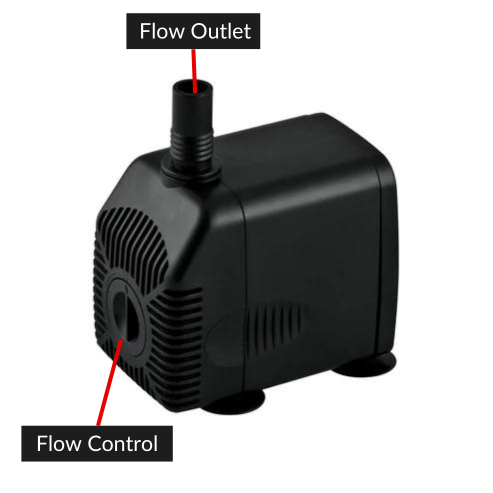Water features are a wonderful way to bring a vibrant atmosphere to your outdoor garden areas, but how do they work? Regardless of the design, most water features will work the same. All water features need 3 key components to run; a reservoir, a water pump, and some tubing or pipe. In short: a pump will suck water from a reservoir, which then travels through tubing, which will eventually recycle back into the reservoir.
Water Feature Reservoir:
A space for water to be collected and stored, typically at the bottom of your fountain. This is where the pump will be submerged and draw water from for circulation. Some water features will If you're creating your own water feature, your reservoir may be a garden pond, otherwise if you are purchasing a fountain unit, your reservoir will be a part of the unit. 

How Does A Fountain Pump Work?
Pumps will create the flow & circulation for your water feature, they are designed to be submerged underneath water in your reservoir. Water is sucked in through the small holes on the front, then comes out through the flow outlet, which can be connected onto a tube. Pump flow rates are measured in Litres Per Hour (L/hr), which is calculated against the height of the fountain.

We include pumps with all water feature purchases, unless specifically outlined. Our water feature pumps can come in 3 varieties, including:
-
Standard - A standard submersible water feature pump will be 240v and just requires being plugged into a household/garden electric socket. This is the most common type of water feature pump, with our preferred brands being Reefe and PondMAX. A standard pump is recommended if your water feature is being placed close to the power point.
-
Low Voltage - A low voltage submersible water feature pump will be either 12v or 24v. This is achieved with a transformer, which is left close to the power point. Low voltage pumps are recommended if there are any safety concerns, such as children or pets. A low voltage pump will not be weaker or require less power, as it's just using more amps rather than voltage.
- Solar with Battery - Solar is a great option for those who cannot connect their pump to an outdoor electric socket. They are more expensive, but worth it if it takes the hassle out of organising an electrician coming to your property. We recommend Solar with a Battery Back-up system, especially for those living in the less sunny states like Melbourne, Adelaide, or Tasmania. The battery will let you run your fountain in cloudy weather, and at night.
How To Determine Tubing Size for a Fountain?
Your water feature should come with tubing pre-installed, but in the circumstance that you are designing your own design, you will need to organise your own tubing. We recommend Clear Vinyl Tubing, as you will be able to see if any debris is blocking your tubing in the future. Our tubing begins at the smallest size of 8mm, to the largest size of 25mm. Pumps will typically come with multiple sizes for the outlet, you can measure the outlet to ensure you acquire the right size tubing for the outlet. It's important that the tubing on the pump outlet is tight, as a loose connection will disconnect under pressure, preventing water flow.

As you embark on your water feature journey, keep in mind the diversity of options available, from standard pumps for convenient household use to low-voltage alternatives for enhanced safety, and even solar-powered solutions for eco-conscious installations. By considering these factors, you not only create a visually stunning outdoor oasis but also ensure the longevity and efficient operation of your water feature.
Whether you're drawn to the tranquility of a garden pond or the elegance of a fountain, understanding the mechanics behind water features empowers you to bring the soothing sounds and captivating visuals of flowing water to your outdoor haven.
